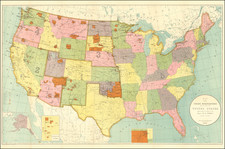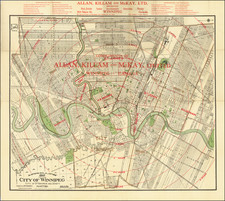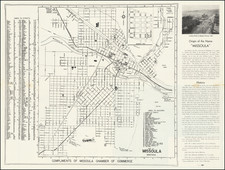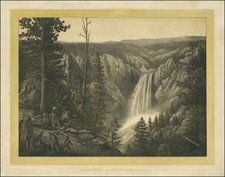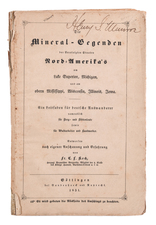Fine Map Illustrating Baron Lahontan's Long River
Engrossing map prepared to illustrate Lahontan's imaginary west-to-east Long River (Rivière Longue), rising in distant western mountains and emptying into the upper Mississippi.
Studded with narrative notes and illustrations about his travels and geographic “discoveries” (or myths), the map also shows the central region of Canada and what is now the American Midwest, which he explored while serving in the French army. The map extends east to the Great Lakes to show Lac Superieur, Lac de Illinois (Lake Michigan), and a number of the early French forts and fur trading outposts.
Lahontan's map was one of the most influential of all chimerical cartographic works, affecting the cartographic landscape of the upper Mississippi, Great Plains and Rocky Mountain regions for nearly fifty years. This map of the Long River was issued in Noueaux Voyages de M. le Baron de Lahontan dans l'Amerique Septentrionale, one of the most influential yet fanciful works of its time.
The map depicts the Long River flowing from the mountains in the west, likely the Rocky Mountains, and connecting to the Mississippi River. On the western side of the mountains is another river, presumably flowing into the Pacific.
The map refers to several Indian tribes, including the Tanuglauk, the Gnacsitares, and the Mozeemleks. All of these appear to have been conjured by Lahanton's imagination, although he claims to have met members of all of these tribes in his texts and describes these encounters in detail. He claims that the western half of this map is a reproduction of a map the Gnacsitares made for him on a deerskin, and that it is accurate to "thirty minutes" of latitude and longitude. This is obviously false.
In addition, he claims that the Mozemleks told him about Tanuglauk boats which could hold two hundred passengers and buildings eighty feet long, both of these which were drawn for him on tree bark and reproduced here. The amount of detail that Lahanton goes into to describe the provenance of his information is remarkable, particularly as none of it can be corroborated by any other sources.
The eastern half of the map fairs little better in accuracy, despite supposedly being drawn from Lahontan's own observations. He claims to have traveled up the Long River to nearly the base of the Rocky Mountains, with a fleur-de-lis marking his highest ascent along the river. To Lahontan’s credit, there are some roughly correct observations. The Wisconsin [Ovisconsink] River is named, perhaps one of the earliest examples of this river being named. Melchisedech Thevenot's 1683 map shows the river but neglects to name it. The Illinois, Missouri, Wabash, and other branches are all named as well, but these lower branches were already relatively well known.
States and Editions
This is entry 305 in Kershaw, the second state of the 1715 Lahontan map.









![Fly to a Holiday on Continental [Golden Jet Souvenir Flight Map]](https://storage.googleapis.com/raremaps/img/small/90328.jpg)
